

Language lateralization development in children with autism: Insights from the late field magnetoencephalogram. A Department of Medical Imaging, University of Toronto, 150 College St., Room 116, Toronto, Ont., Canada M5M 1G1b Child Development Centre, The Hospital for Sick Children, Toronto, Ont., Canada Received 13 April 2005, Revised 12 May 2005, Accepted 12 May 2005, Available online 19 July 2005 Choose an option to locate/access this article: Check if you have access through your login credentials or your institution Check access doi:10.1016/j.neulet.2005.05.037 Get rights and content Abstract Left hemisphere dominance represents the typical language lateralization profile for the majority of neurologically healthy, right-handed individuals.
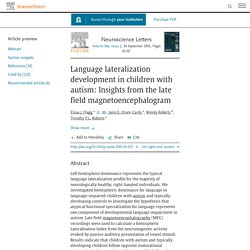
Keywords Lateralization Index; Hemispheric dominance; Language processing; Autism; Maturation; Children; Auditory processing Copyright © 2005 Elsevier Ireland Ltd. Brain Lateralization - North Shore Pediatric Therapy. What is Brain Lateralization?
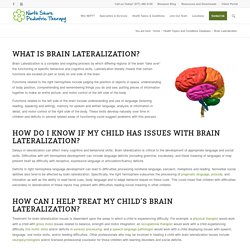
Brain Lateralization is a complex and ongoing process by which differing regions of the brain “take over” the functioning of specific behaviors and cognitive skills. Lateralization literally means that certain functions are located (in part or total) on one side of the brain. Functions related to the right hemisphere include judging the position of objects in space, understanding of body position, comprehending and remembering things you do and see, putting pieces of information together to make an entire picture, and motor control of the left side of the body. Functions related to the left side of the brain include understanding and use of language (listening, reading, speaking and writing), memory for spoken and written language, analysis of information in detail, and motor control of the right side of the body.
These skills develop naturally over time in children and deficits in several related areas of functioning could suggest problems with this process. Does cerebral lateralization develop? A study using functional transcranial Doppler ultrasound assessing lateralization for language production and visuospatial memory. Language lateralization development in children with autism: insights from the late field magnetoencephalogram. Lateralization of Function in Cerebral Hemispheres. Biology 202 1998 First Web Reports On Serendip Jonathan Ball One of the major goals of neuroscience is to be able to understand the relationships between the structures of the nervous system and a persons outward behavior.
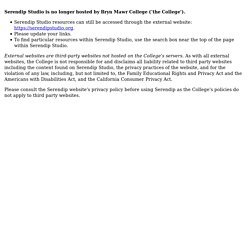
Often times it is difficult or unethical to directly study the nervous system during a behavior and indirect methods must be used instead. One example of such an indirect method is using a subjects preferred hand to predict which of the two Cerebral Hemispheres is dominant. The are some difficulties with his method of studying lateraliztion of function but if it can be better understood it could have many practical and theoretical implications for the study of neuroscience. The Cerebral Hemispheres are very similar in appearance, but they differ significantly in their structure.
These two discoveries created a watershed of experimentation as other scientists attempted to discover more functional differences between the hemispheres. WWW Sources 3) V.E. 4) Piethish, Paul. Information on The Brain, Brain Fiction, Brain Mythology. What do these statements all have in common?
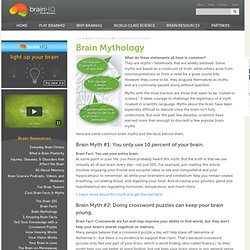
They are myths—falsehoods that are widely believed. Some myths are based on a modicum of truth, while others arise from misinterpretations or from a need for a great sound bite. However they come to be, they disguise themselves as truths and are commonly passed along without question. Myths with the most traction are those that seem to be "rooted in science. " It takes courage to challenge the legitimacy of a myth cloaked in scientific language. Handedness and Brain Lateralization. The human brain is a paired organ; it is composed of two halves (called cerebral hemispheres) that look pretty much alike.

The term brain lateralization refers to the fact that the two halves of the human brain are not exactly alike. Each hemisphere has functional specializations: some function whose neural mechanisms are localized primarily in one half of the brain. In humans, the most obvious functional specialization is speech and language abilities. In the mid-1800s, Paul Broca (a French neurosurgeon) identified a particular area of the left hemisphere that plays a primary role in speech production. Shortly afterwards, a German neurologist, Carl Wernicke, identified another part of the left hemisphere primarily concerned with language comprehension.
Most humans (but not all) have left hemisphere specialization for language abilities. «Handedness» is a vague term, and can mean many things to many people. Revisiting human hemispheric specialization ... [Trends Cogn Sci. 2013. Hand Preference Questionnaire: Interim Report. Lateralization of Cerebral Functions.pdf. Lateralization of brain function - Wiki Article. The Lateralization of Brain Function - Voluntary Movements and Cognitive Functions. Why the Left-Brain Right-Brain Myth Will Probably Never Die. The left-brain right-brain myth will probably never die because it has become a powerful metaphor for different ways of thinking – logical, focused and analytic versus broad-minded and creative.

Take the example of Britain’s Chief Rabbi Jonathan Sacks talking on BBC Radio 4 earlier this year. Advantages of having a lateralized brain. New Study Questions Myth Of Left-Brained And Right-Brained Personality Traits. According to new research from University of Utah neuroscientists, no evidence exists within brain imaging that pinpoints a difference in the way humans use their brains.
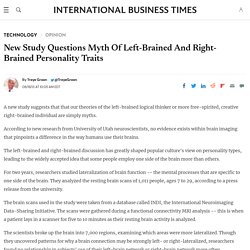
An Evaluation of the Left-Brain vs. Right-Brain Hypothesis with Resting State Functional Connectivity Magnetic Resonance Imaging. Lateralized brain regions subserve functions such as language and visuospatial processing.
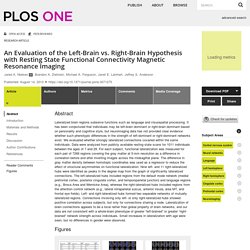
It has been conjectured that individuals may be left-brain dominant or right-brain dominant based on personality and cognitive style, but neuroimaging data has not provided clear evidence whether such phenotypic differences in the strength of left-dominant or right-dominant networks exist. We evaluated whether strongly lateralized connections covaried within the same individuals. Data were analyzed from publicly available resting state scans for 1011 individuals between the ages of 7 and 29. For each subject, functional lateralization was measured for each pair of 7266 regions covering the gray matter at 5-mm resolution as a difference in correlation before and after inverting images across the midsagittal plane.
The difference in gray matter density between homotopic coordinates was used as a regressor to reduce the effect of structural asymmetries on functional lateralization. Figures. Child Dev. Wilbrecht Lab. Teufel2010 Lateralization & Orienting .pdf.